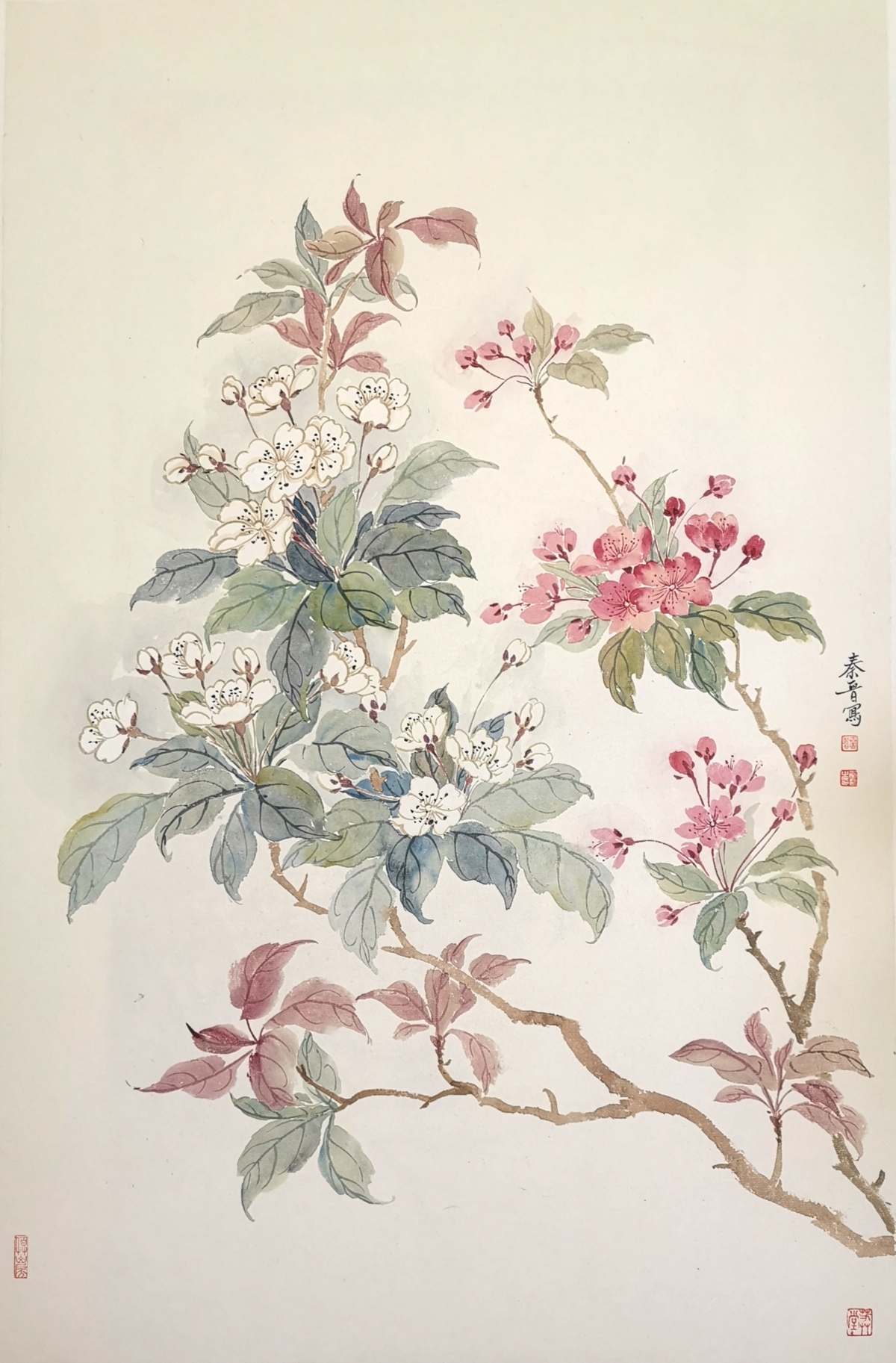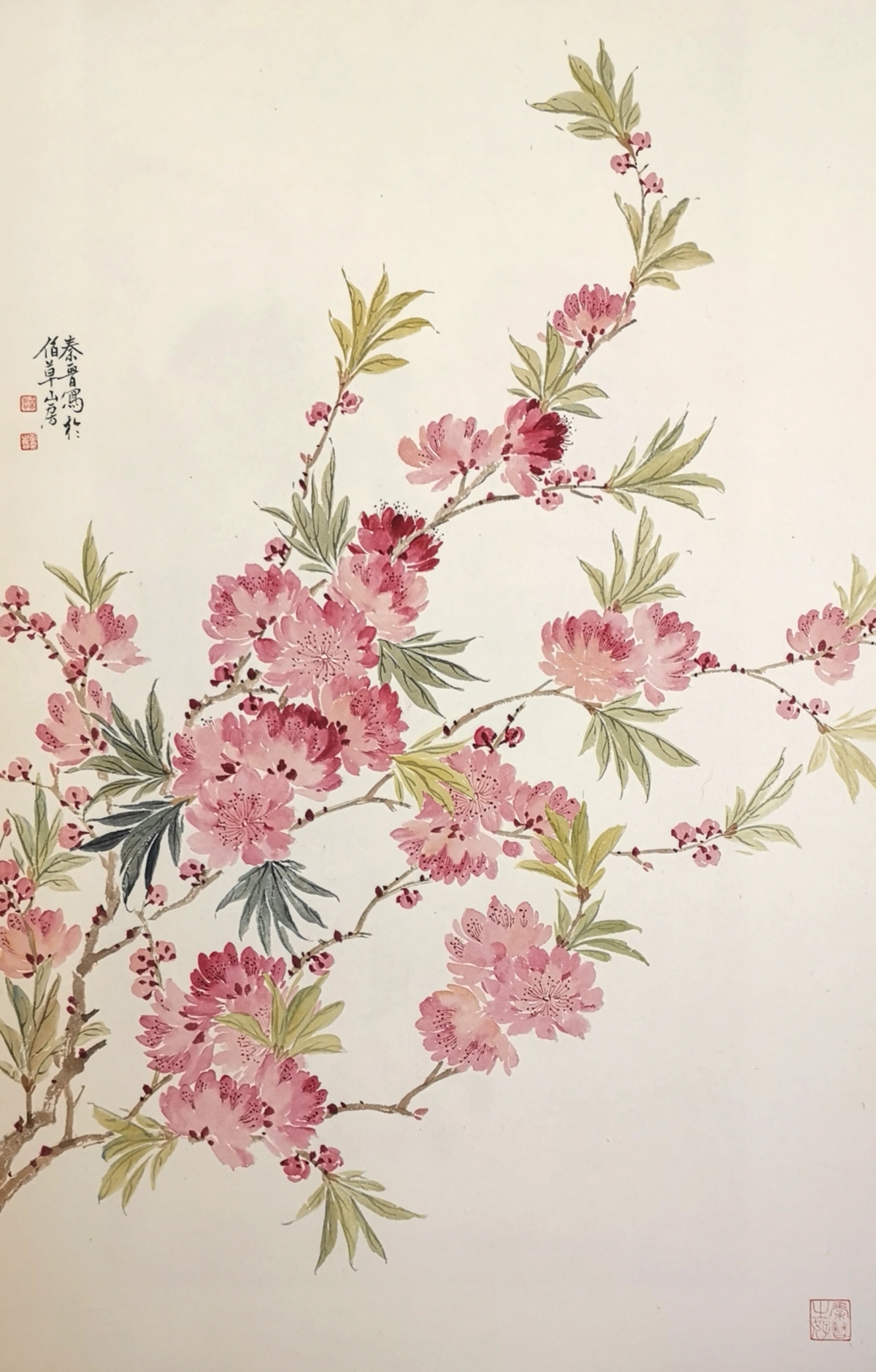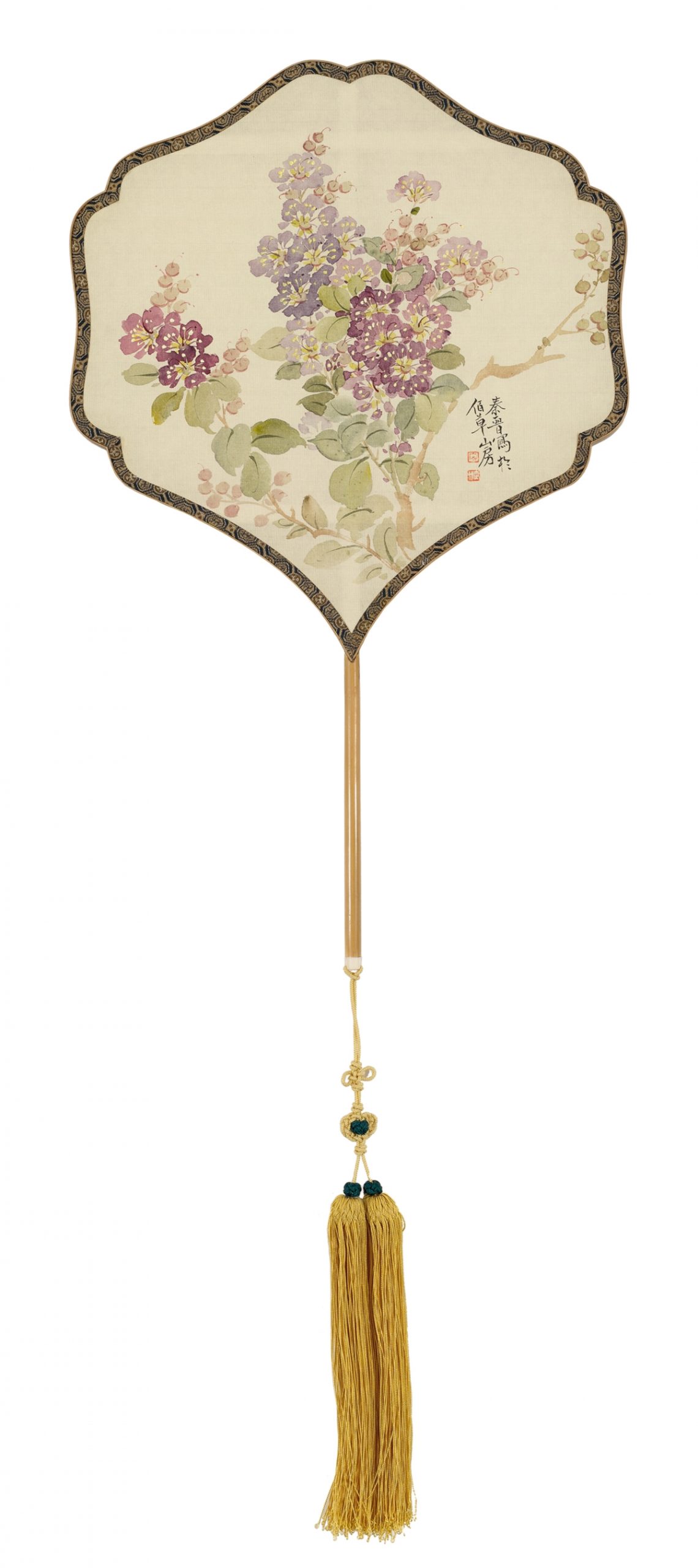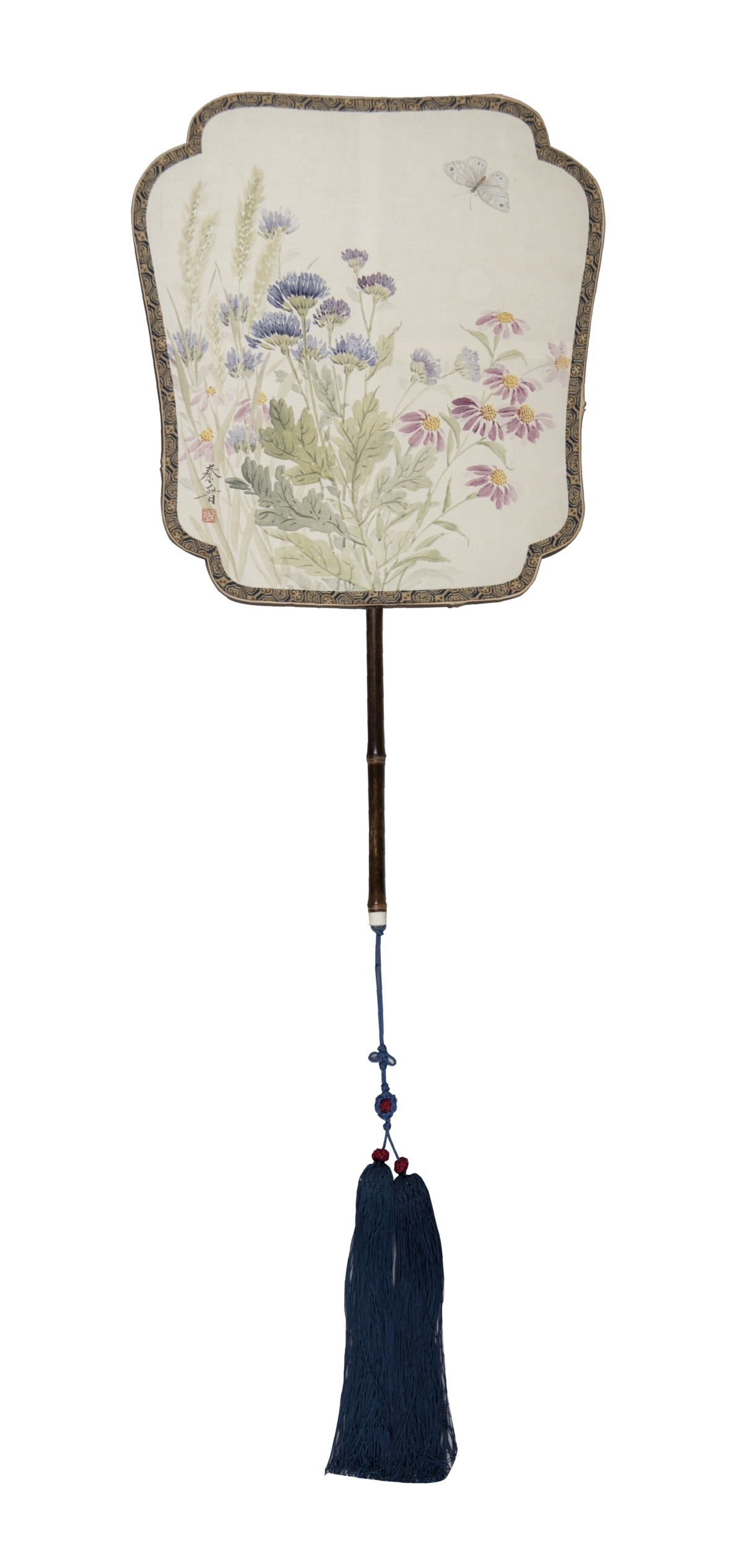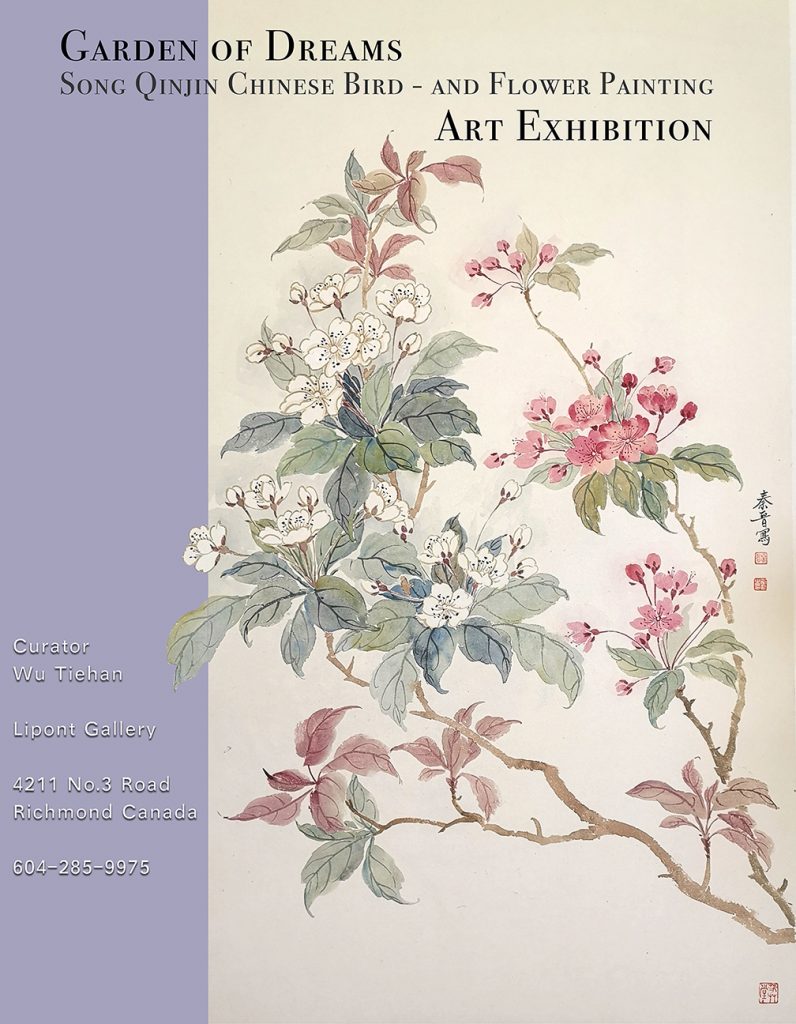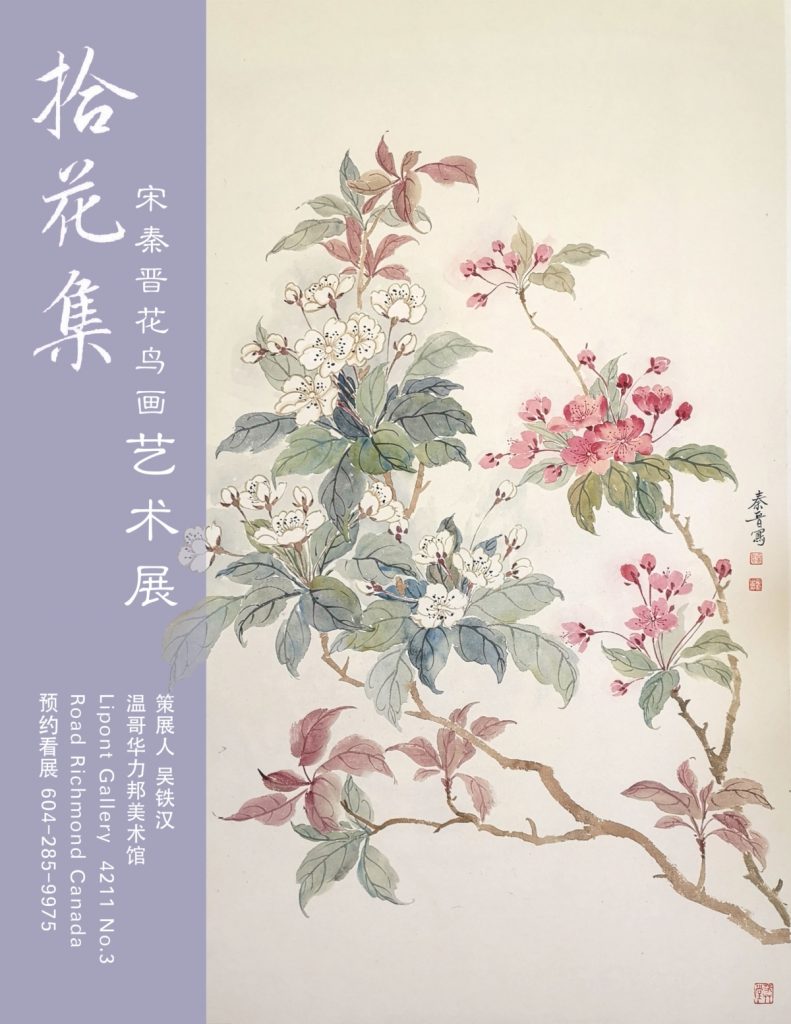Qinjin Song
Professional artist, graduated from Xi’an Academy of Fine Arts, China. In 2012, she founded Herborist Shanfang’s personal studio in Beijing. He currently lives and works in Shanghai and Beijing and has held numerous solo exhibitions in Beijing and Shanghai.
Her publications include “Jie Yu Hua”, “Picking Up Flowers – Chinese Paintings of Qinjin Song”, “Looking for Fragrance on the Road – New Ink and Flowers of Qinjin Song”, “Looking at Flowers on the Road – New Ink and Flowers of Qinjin Song “, “On the Path – Qinjin song’s Sketches from Life”, etc.
Works are published in “Oriental Art”, “Chinese Painting and Calligraphy”, “Art Observation”, “Research on Painting and Calligraphy”, “Art Newspaper China”, “Rongbaozhai”, “Art Market”, “Contemporary Chinese Painting”, “Chinese Art”, “Collection “, “Art School” and other publications.
宋秦晋
职业艺术家,毕业于西安美术学院。2012年在北京创建佰草山房个人工作室,现创作生活于上海和北京,并在北京和上海等地举办十余场个人作品展览。
出版有《解语花》、《拾华集——宋秦晋中国画作品》、《陌上寻香——宋秦晋新水墨花卉》、《陌上看花——宋秦晋新水墨花卉》、《陌上——宋秦晋写生作品》等。
作品在《东方艺术》、《中国书画》、《美术观察》、《书画研究》、《美术报》、《荣宝斋》、《艺术市场》、《当代中国画》、《中国艺术》、《收藏》、《艺术派》等刊物上发表。
The paintings of Qinjin Song were based on traditions and the practices established by Yun Nantian, Chen Baiyang and others but Song came up with new techniques of her own. Based on inheriting Yun Nantian’s elegant brushwork, bright and quiet colouring techniques of boneless flowers, Song’s art also combines Chen Baiyang’s freehand ink painting and the expressive skills of Western painting, gradually forming a style that emphasizes similarity and expressiveness, not only neat and beautiful, but also like freehand brushwork, the painting style of both work and writing has expanded the expressive space of small freehand flower and bird paintings to a certain extent.
Song painted wildflowers with colours instead of black ink. Traditional Chinese painting has experienced a development track from colour to ink painting, emphasizing ink and suppressing colour has gradually become the mainstream attitude towards painting of literati who have the right to speak in the ancient Chinese social structure, and it has been passed down to this day. However, Song tried to separate ink from colour, emphasized the beauty of colour in nature, and put ink at the end. This is a bold decision under the current trend of advocating the charm of ink and wash.
Looking at the works of Song you will find that these paintings full of poetic experience are not only the painter’s description of the external image of wildflowers but also the praise of their character behind the art form. The artist sings in harmony with her own temperament and natural atmosphere, which not only reveals the artist’s realm of “wild groves and plains like stalks” and “joys for flowers and whiskers”, but also reflects his indifferent and peaceful state of mind and elegant and quiet artistic taste. This kind of pursuit is just like the wildflowers that germinate in the early spring, and the wildflowers in the cold and humble will eventually turn into the fragrance of the mountains and wilds.
宋秦晋的绘画以传统为本,宗法恽南田、陈白阳等人而又自出新意。在继承恽南田笔法秀逸、设色明静的没骨花卉技法的基础上,又融合陈白阳水墨写意画的恣肆洒脱和西方绘画富有表现力的技巧,逐步形成了既重“形似”又强调“传神”,既工整秀丽,又写意神似,工写兼能的绘画风格,在一定程度上拓展了小写意花鸟画的表现空间。
宋秦晋画野花不假墨笔,直以彩色图之。中国画经历了一个从色彩向水墨转移的发展轨迹,重墨抑色逐渐成为中国古代社会结构中具有话语权的文人墨客对于绘画的主流态度并传续至今。而宋秦晋却试图把墨与色分离,强调自然中的色彩美,并把墨的坐席排到了最后,这在当今崇尚水墨韵致的风尚下,不能不说是一个大胆的决定。
纵观宋秦晋的作品,你会发现,这一幅幅充满着诗性体验的画面不单是画家对野卉闲花外在形象的描摹,更多的是在艺术形式背后对其品格的赞美。画家以其自身性情与自然气息相唱和,既表露了画家“野芜平似翦”“为花须尽欢”的境界,又体现了淡泊平和的心态与清雅恬静的艺术品味。这种追求,正如初春时节萌蘖着的、荒寒卑微的野卉闲花,终会化育出漫山漫野的馨香。
The Tranquility Inside One’s Heart – Qinjin Song’s Paintings
“Qinjin Song’s flower-and-bird paintings have two characteristics. On one hand, they come from the observation and praise of natural objects, and through those colourful rendering, they reveal the spiritual expression of life; on the other hand, they come from the revelation of Song’s inner state, which is the true nature and emotion enshrined in the mountains and wildflowers. Let us approach, listen carefully, and feel the artist’ simple feelings, and dwell in the peaceful world.” – Shuyu Yin
(Shuyu Yin, originated from Bazhou, Hebei, China, was born in Xianghe, Hebei in 1974. He graduated from Hebei Light Industry School with a major in ceramic art in 1994. In 2000, he graduated from the Chinese Painting Department of China Academy of Art with a bachelor’s degree. In 2005, he graduated from the Department of Chinese Painting of Central Academy of Fine Arts with a master’s degree. In 2011 he graduated from the Central Academy of Fine Arts’ Institute of Formative Arts with a doctorate degree. Now he is an associate researcher at the Chinese National Academy of Arts, host of the “Art Observation” column and a member of the China Artists Association.)
The paintings of Song have an elegant style, and you can see freshness in the simplicity. Through every flower and grass in nature, she makes us see the vitality of nature with subtlety and grandeur. Especially now when the natural ecological environment is constantly being destroyed, Song has brought us “one flower, one world, one grass, and one universe” through the exhibition, thus reminding the relationship between man and nature, man and ecology.
From the perspective of painting, freshness and elegance are very important styles in Chinese painting. In fact, the more elegant things are, the more difficult it is to draw. The boneless flowers of Song have layers in the details, rich in the shades, and vast in the light. Her paintings incorporate many painting methods. It not only absorbs the traditional boneless flower painting method and ink painting technique, but also draws lessons from some western painting methods. It can be said that this is an improved contemporary boneless painting method. Song painted with great care, and the brushwork was particularly delicate, not careless, but meticulous. This is the strength of female painters, and it is beyond the reach of many male artists. It is through such subtle and delicate depictions that her painting realm and style are immediately revealed.
We often talk about “elegant interest”. Whenever I read Shiqiu Liang’s short essays, I have the aftertaste of seeing the big in the small. Similarly, I feel the same way when I appreciate and read Song’s paintings. Elegance is her technique and her realm. She expresses her authenticity, and the authenticity of the world. The world has a noisy side and a quiet side, but people often pay attention to the noisy side and ignore the quiet side. In urban life, elegant and quiet things can improve the quality of life. If Song’s paintings are displayed in the living room and bedroom, we will be happy after seeing them after a tiring day. This feeling of appreciation and reading will make people naturally return to the true state of life. Of course, painting has many expressive themes, but it cannot be judged by the theme. Whether it is paintings of major historical themes, urban ink landscapes and figures, fresh and elegant flowers, and wild grasses, all of them have their own meaning and value, and they will bring completely different feelings to people. The paintings of Song are not only needed in galleries, but also homes. They can comfort the soul and make people relax in the heavy life. In fact, this is the art that is very much needed in today’s era.
宁静的心灵世界 –- 宋秦晋的绘画艺术
“宋秦晋的山花野卉,动人可爱。她的花鸟画有两个方面的特质,一方面来自于对自然物象的体察与赞美,通过那些斑斓的色彩,透露出对生命的灵性表现;另一方面,来自于她内心状态的流露,那是寄托在山花野卉当中本真的心性与情感。让我们走近、细听、感悟画者朴素的情怀,驻足于宁静的心灵世界。 ”
——阴澍雨
(阴澍雨,河北霸州人,1974年生于河北香河。1994年毕业于河北轻工业学校陶瓷美术专业。2000年毕业于中国美术学院中国画系花鸟专业,获学士学位。2005年毕业于中央美术学院中国画系,获硕士学位。2011年毕业于中央美术学院造型艺术研究所,获博士学位。现为中国艺术研究院副研究员。《美术观察》栏目主持。中国美术家协会会员。)
宋秦晋的画格调淡雅,在平淡中见清新。她通过大自然中的一花一草,以精微致广大,使我们看到了大自然的勃勃生机。尤其在自然生态环境不断遭到破坏的当下,秦晋通过展览把“一花一世界,一草一乾坤”带到我们面前,从而提示了人和自然、人和生态之间的关系。
从绘画角度度来讲,清新淡雅一路是中国画中很重要的风格。事实上,越是淡雅的东西越是难画,秦晋的没骨花卉淡中有层次,淡中蕴丰富,淡中见广大。她的画融合了很多绘画方法。不仅吸收了传统的没骨花卉的画法、水墨画的技法,同时也借鉴了一些西方方的绘画方法,可以说这是一种经过改良的当代没骨画法。秦晋画得非常用心,笔法特别细腻,绝非粗枝大叶,而是精心细作。这是女性画家的长处,也是大多数男性艺术家望尘莫及的。正是透过如此微妙的、细腻的描绘,她的绘画境界与格调便一下子彰显出来。
我们常讲“雅趣”,每当我读梁实秋的精短的小文,便有小中见大的回味。同样,我赏读秦晋的画,也有同感。淡雅是她的手法,也是她的境界。她表现了她的本真,也表现了世界的本真。这个世界有喧闹的一面,也有静的一面,而人们往往注重喧闹的一面,而忽略了静的一面。在都市生活中,淡雅、幽静的东西更能提高生活的品质。倘若秦晋的画挂在了客厅和卧室,劳累了一天的我们看到后精神会愉悦,这种赏读感受使人自然而然地回归到生活的本真状态。当然,绘画有很多表现题材,但不能以题材论高下。重大历史题材绘画也好,都市水墨风景、人物也好,清新、淡雅的闲花野草也好,它们的存在都有各自的意义和价值,会给人带来迥然不同的感受。秦晋的画不仅展厅需要,继而可以从展厅到居室再到生活中来,它们能慰藉心灵,使人在沉重的生活中放松下来,其实这才是当今时代非常需要的艺术。

